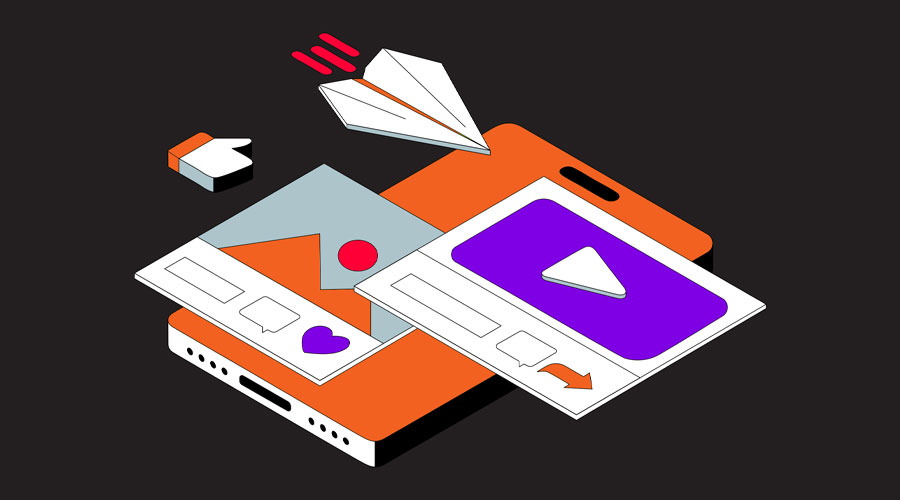What do you think of when you picture a Viking helmet? Is it some metal skullcap with horns projecting out on either side? A lot of people think of an image like that when given that prompt.
But did you know there is no archeological evidence to support that Vikings wore horned helmets? None. This misconception was likely popularized by artists and costume designers in the 1800s.
There are lots of things we collectively and individually believe to be true about the world that aren’t – many of which continue to be spread by otherwise smart people.
My kid came home from school one day telling us all about how he learned in class that deoxygenated blood (the stuff in our veins going back to our hearts) is blue!
In fact, it’s a dark muted red color. Trying to explain to an 8-year-old that his veins can appear blue or green because the human eye perceives color based on light refraction was an interesting experience.
And what does any of this have to do with marketing? So glad you asked!
Assumptions in Marketing
Assumption
- a thing that is accepted as true or as certain to happen, without proof.
Whether we like it or not, marketers make assumptions every day. But when we lean into the natural human tendency to assume something where we have a gap in our understanding, we leave a lot of room for error that can ultimately mean lost opportunity.
The single scariest statement I hear otherwise smart marketers and leaders make is:
“We don’t need to do ____________. We already know ________.”
And my first question is always: “How do you know that?”
- What study did you conduct?
- Is your information primary, secondary, or the dreaded anecdotal?
- What forecasting or modeling have you run to prove the potential for this outcome?
Related: Ready, Set, Research
Often, there was no study, or it’s a composite of information from a bunch of different studies that were not designed to answer the question they are using the assumption to answer. And even more frequently, the explanation includes the death knell phrase “Well, we’ve always done _____” or “It’s institutional knowledge that…”
It’s just an assumption – something that is believed to be true from some Frankenstein collection of information built from bits of truth and past experience. If we’re lucky, we assumed correctly! But we can’t be lucky 100% of the time.
A Simple Example:
Company ABC wants to promote a new product. They’ve had a lot of success in promoting other products in the past on social media, so they decide to develop a killer creative concept that they run on Facebook.
The campaign did okay.
They are not impressed by the results and start to dig into what drove the lackluster performance.
Through their investigation, they find that a decent percentage of their target audience had reduced their average usage of Facebook in recent months, migrating to other social channels.
But the budget had been spent.
Had they invested the time upfront to do some basic audience research to validate their assumption that Facebook was the best channel in which to promote this new product, they could have made this discovery before running the campaign – and adjusted their channel strategy accordingly.
Related: Get to Know Your “Anonymous” Users
I’m not saying there is never a use case for assumptions. We use them all the time, especially early in a project to document what we think to be true. But the point in documenting those assumptions is to acknowledge what we don’t know and determine what we need to validate.
In the above example, we would have recommended building in a testing plan and optimization strategy to ensure that early in the campaign, when the expected results were not being realized, we could pivot to other channels that netted higher performance.
We never want to be like lemmings to the sea, following blindly to dangerous consequences. *
But if it’s natural to make assumptions – how do we change that behavior?
Assumptions are important. We don’t want to stop having them. Rather, we want to be smarter about how we use our assumptions so that they help us make informed decisions instead of driving us to take uninformed or misinformed actions.
- Evaluate whether or not you have evidence that proves the thing you believe to be true.
- Document your assumptions and question their validity.
- Validate where there is truth and fault in your assumptions about customer behaviors, wants, challenges, and barriers. This could be through research, an intentional testing plan and optimization strategy, predictive modeling, or any combination of these activities!
Sometimes the most disruptive and impactful thing we can do for our organizations is to disprove the assumptions that are holding us back from delivering meaningful experiences to our customers.
It’s hard to combat these pervasive untruths, but when you do – your bottom line will thank you.
*Despite the 1958 Disney documentary featuring this bizarre (staged) behavior, lemmings don’t actually follow each other blindly off cliffs to their own demise. But sometimes people do, metaphorically.





